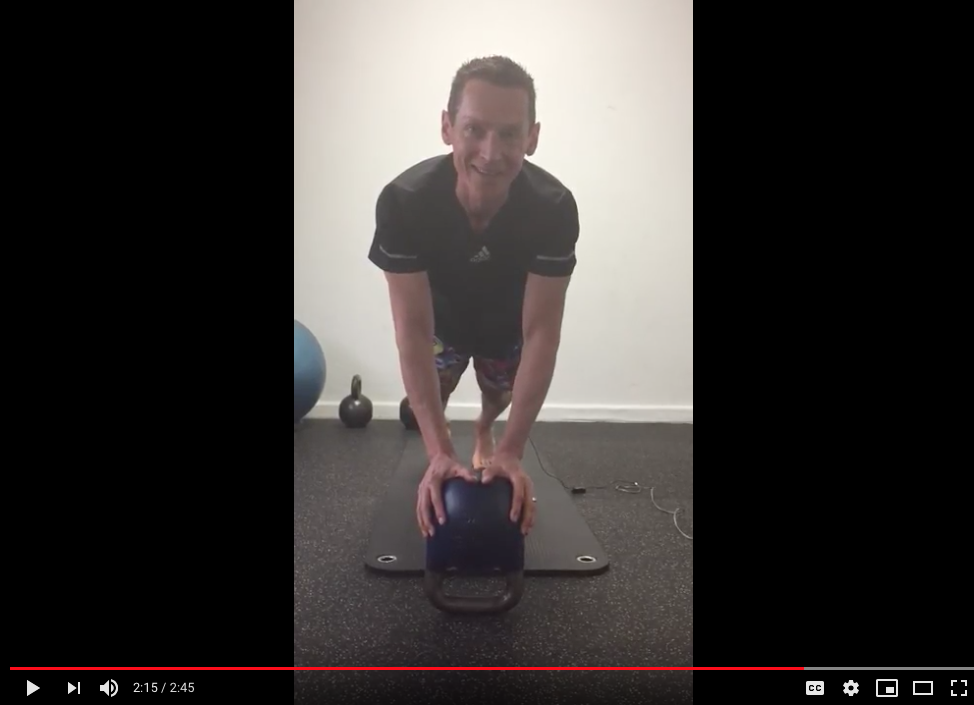Stabilising the Upper Triad: Upper Back, Neck and Shoulders
The upper back, neck and shoulders is one area of the body that is under ever increasing amounts of pressure. Much of this literally has to do with the mechanical forces placed on this highly mobile and flexible region of your body. Hours of computer work, mobile phones & tablets and our warped speed of technological advancement comes at a cost and posture seems to be declining at a rate proportional to technology advancing.
One of the best practises is to stabilise the upper back, neck and shoulders (the upper triad). This maximises strength and support and minimises postural decline and fatigue. The simple push up is a great way to train stability for the upper triad. One thing to remember is you can change your hand positions to create several different push ups that will strengthen slightly different areas of the upper triad.
Have a play with the exercises here in this video and remember to be dynamic. Being strong and supple in various positions is the key to preventing postural decline and keeping the ideal balance of strength and stability in the upper triad.
Push Ups- Strengthening upper triad with bent arm work
- Get in push up position- remember you can change your arm position around to change the activity and the stability of the working muscles.
- Keep your eyes looking slightly in front of you, try not to tuck your chin. Always perform as a controlled movement. Work on maintaining a tight core from the shoulders and neck right through to the abdominals, gluts and lower back. Always lower smoothly towards the ground before pausing and pushing up while maintaining a rock solid core.
- Different push up examples:
- Standard shoulder width apart with elbows at 45 degrees.
- Standard shoulder width apart with elbows tuning in right next to your body.
- Bring hands in- making triangle with hands.
- Take hands out to do wider push up.
- Put one arm up & leg and the other down.
Planks- Strengthening upper triad with straight arm work
Planks are a fantastic position and especially if you consider the postural fatigue of hours of prolonged sitting, these prolonged holds really help to maximise postural entrance and stability. Here’s a few examples:
- Go into plank position.
- You can have hands flat on ground with elbows locked out.
- You can have hands in a fist position also with elbows locked out.
- If you want to get technical- use a wobble board.
- This creates a little more stability through all your muscles, ligaments and tendons which will increase the joint pro reception as well. It’s important to remember, this is a straight arm skill. Keeping the arms locked in extension is a big part of the challenge.
- If you want more of a challenge…grab a kettle bell.
- Do plank with kettle bell **seriously, careful with these ones…I’ve been known to head-butt a kettlebell**. The biggest trick here is a super the video- the kettlebell must be inverted- you are balancing on the handle while grasping the sides of the bell itself.
- If you can master kettlebell plank, try the ultimate. An inverted kettlebell plank push up. That’s right from the plank position over the kettle bell, slowly lower your chest towards the kettlebell. Keeping a tight core is essential here. Try doing a push up and you will have to place very even pressure on the inverted kettle bell to avoid crashing either forwards, backwards or face planting into the ball itself.
If you want to train the stability in your upper back, neck and shoulders- try something different. Play and experiment with these exercises I’ve gone over today.
Please feel free to like, share or comment below. We would love to know what works for you and any tips you may have!

